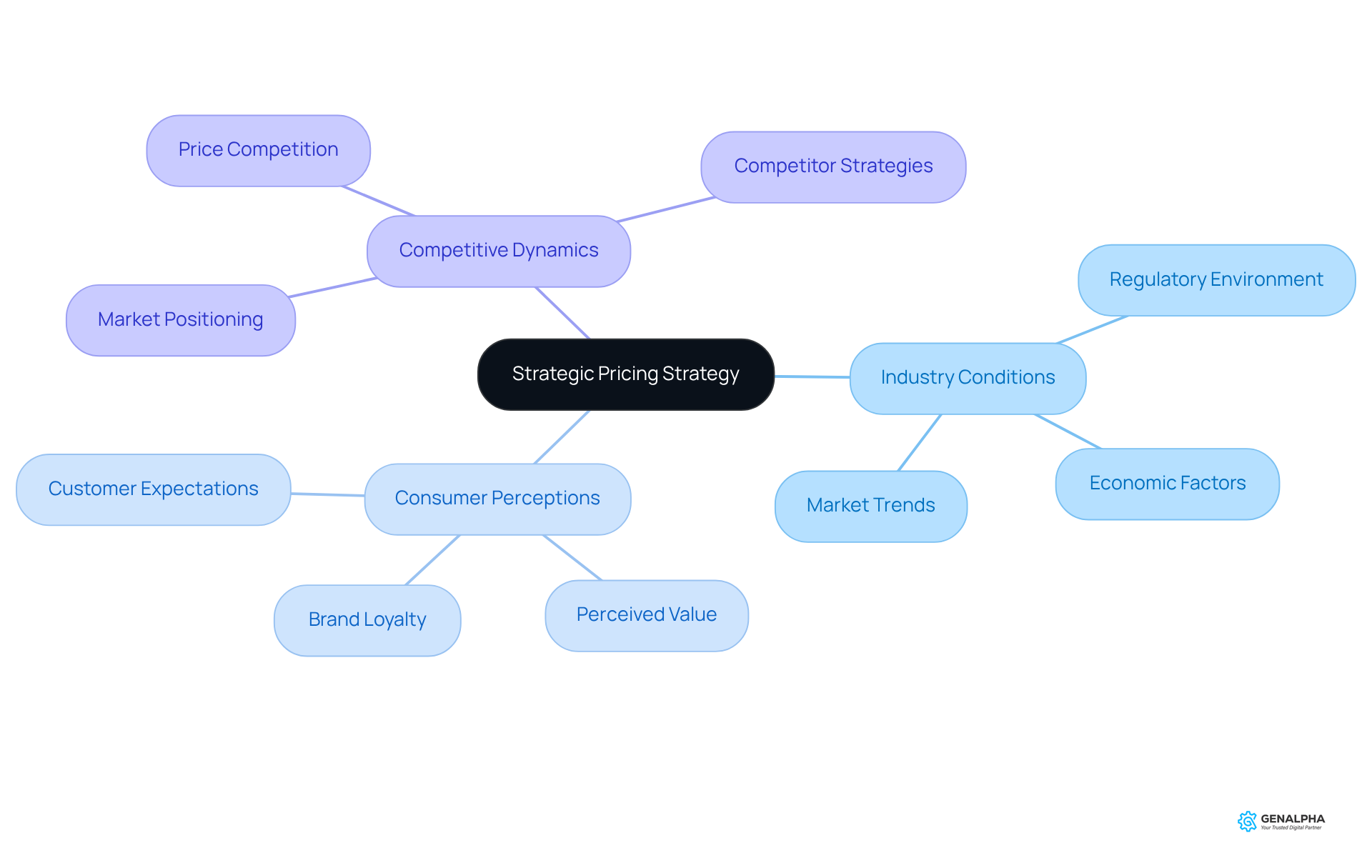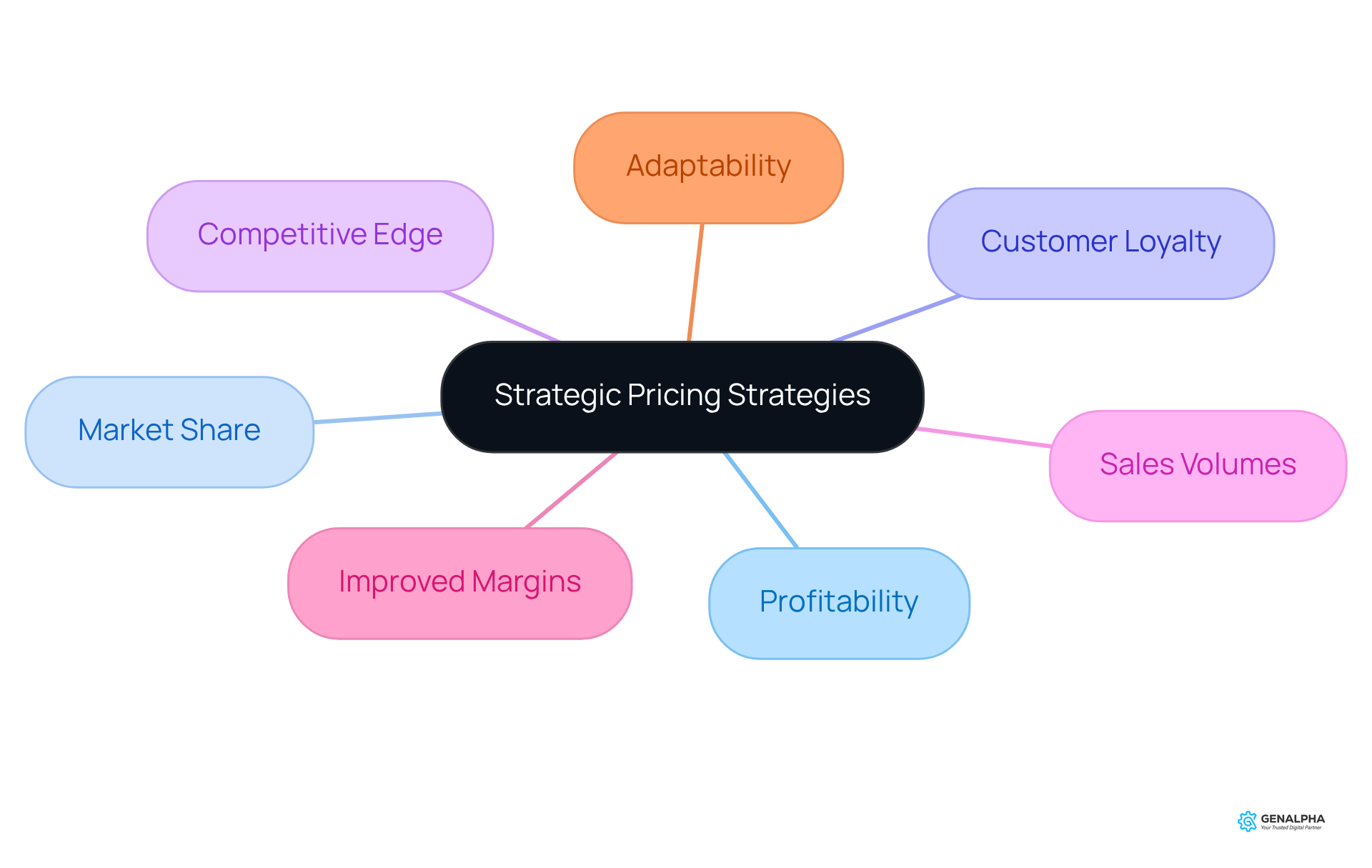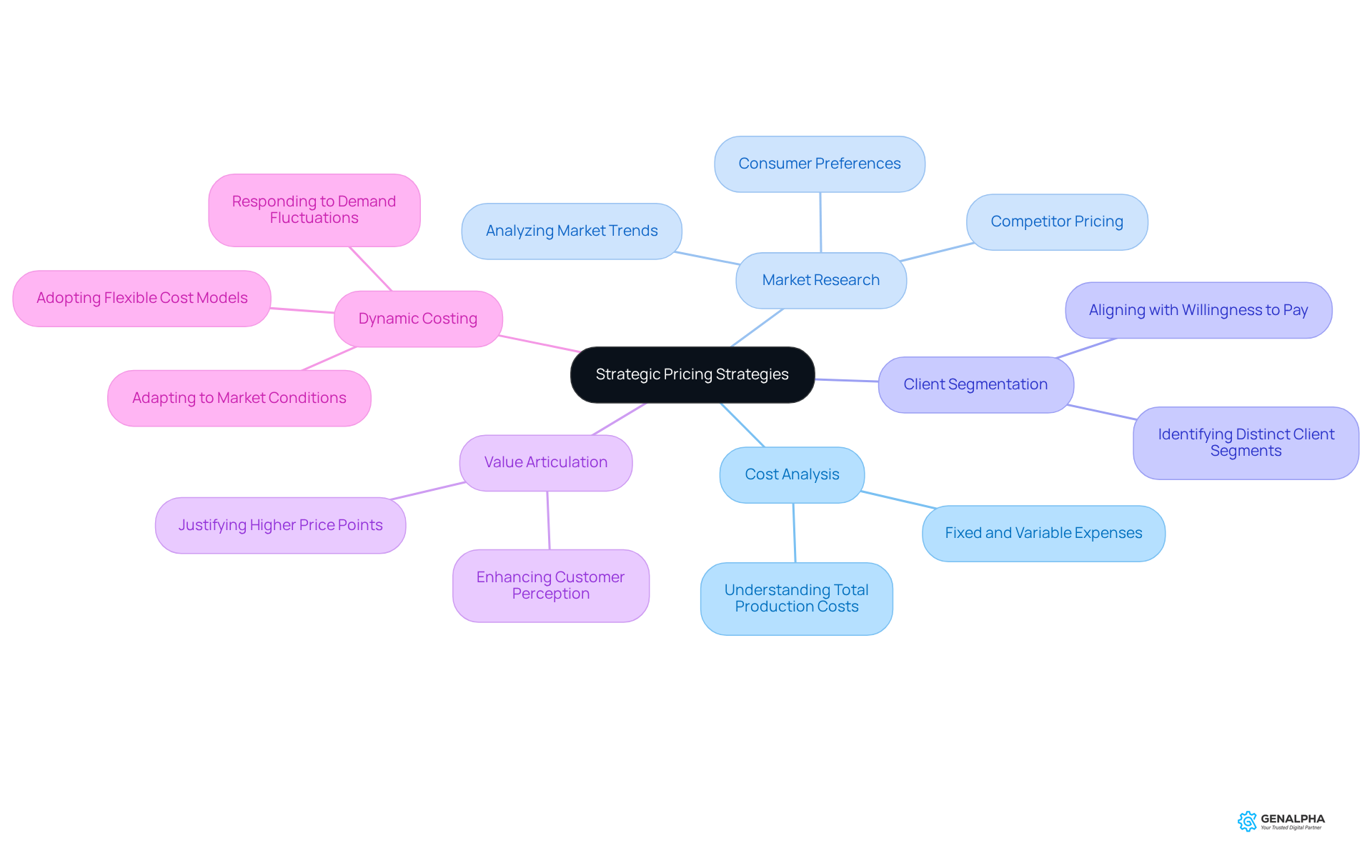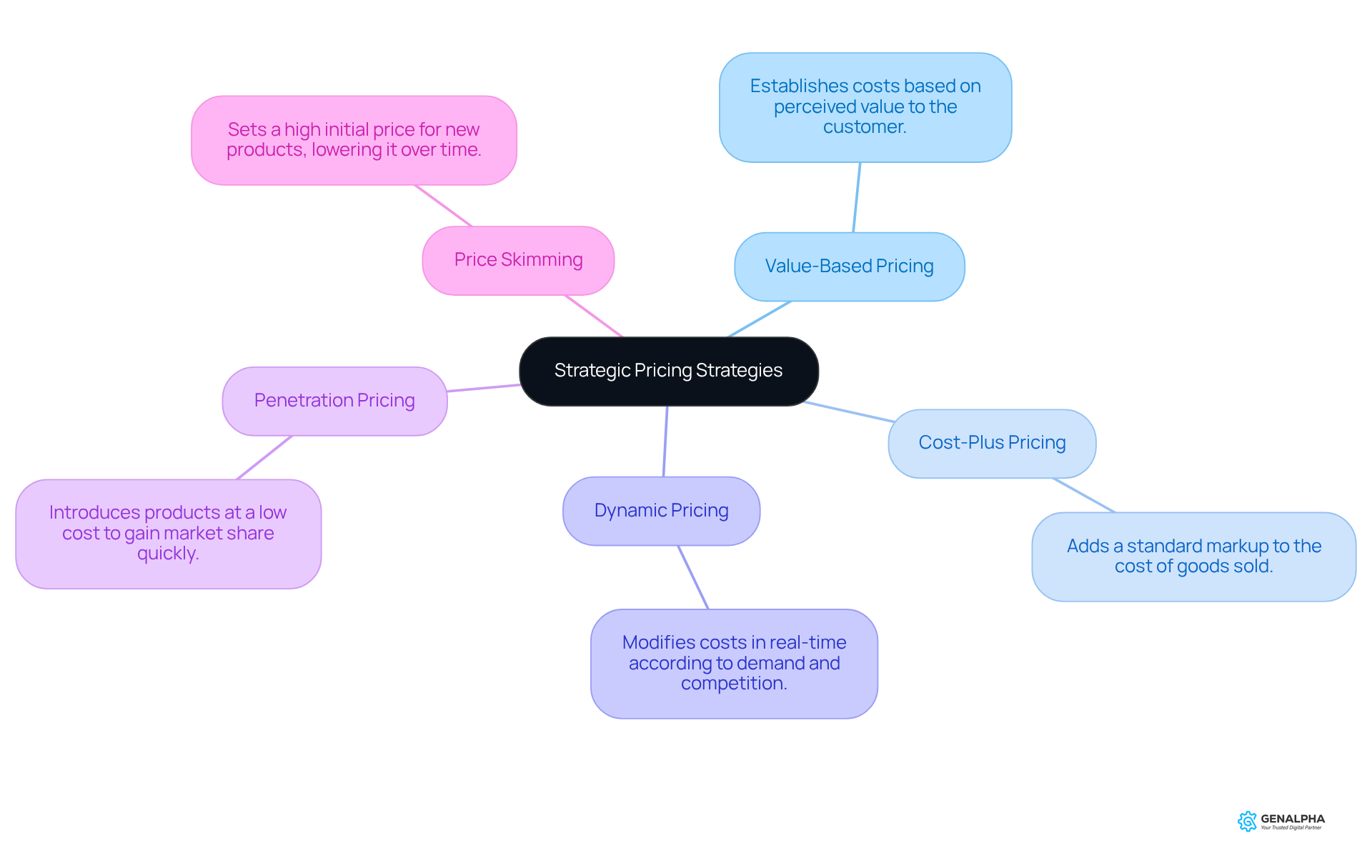Overview
The article underscores the critical role of strategic pricing strategies for equipment manufacturers, emphasizing their vital contribution to maximizing profitability and enhancing market competitiveness. It highlights the necessity of:
- Thorough cost analysis
- Comprehensive market research
- Application of diverse pricing methods, including value-based and dynamic pricing
These strategies empower manufacturers to align their pricing with consumer perceptions effectively and adapt to market fluctuations. As the industry faces increasing competition and evolving consumer demands, understanding and implementing these pricing strategies is not merely beneficial; it is essential for sustained success.
Introduction
Navigating a fiercely competitive market, equipment manufacturers must grasp the nuances of strategic pricing. This approach goes beyond simple cost calculations; it emphasizes the alignment of prices with consumer perceptions and market dynamics to maximize profitability. The real challenge, however, lies in effectively implementing these strategies amidst fluctuating demands and evolving customer expectations. Understanding the key components and types of strategic pricing strategies is crucial for manufacturers aiming to enhance their market position and drive sustainable growth.
Define Strategic Pricing Strategy
Strategic cost-setting methodology is a critical approach that establishes values based on a variety of factors, including industry conditions, consumer perceptions, and competitive dynamics, rather than merely on production expenses. This is designed to maximize profitability while ensuring that the price accurately reflects the perceived value of the product to the buyer. In the competitive landscape of equipment production, implementing a strategic pricing strategy is essential; it equips firms to navigate complex market environments and respond effectively to client demands and competitive pressures.

Explain the Importance of Strategic Pricing Strategies
Tactical cost approaches are crucial for equipment producers, as they significantly influence profitability, market share, and . In an industry characterized by fierce competition, a strategic pricing strategy that aligns prices with consumer value perceptions is essential for enhancing a manufacturer’s competitive edge. A well-executed strategic pricing strategy not only drives higher sales volumes but also leads to improved margins and increased customer loyalty. Moreover, in a rapidly changing market landscape, an effective strategic pricing strategy empowers manufacturers to adapt to fluctuations in demand and cost structures, ensuring long-term viability and growth.

Outline Key Components of Strategic Pricing Strategies
In today's competitive landscape, mastering a strategic pricing strategy is paramount for success. Key elements include:
- Cost Analysis: A comprehensive understanding of total production costs, encompassing both fixed and variable expenses, establishes a crucial baseline for pricing.
- Market Research: By analyzing market trends, competitor pricing, and consumer preferences, manufacturers can effectively utilize a strategic pricing strategy to position their products in the marketplace.
- Client Segmentation: Identifying distinct client segments allows for a strategic pricing strategy that aligns with varying willingness to pay.
- Articulating the unique value offered by a product is part of a strategic pricing strategy, which justifies higher price points and enhances customer perception.
- Dynamic Costing: The adoption of flexible cost models that adapt to market conditions and demand fluctuations is increasingly vital in today’s fast-paced environment.
Embracing these strategies not only drives profitability but also positions businesses for sustainable growth.

Explore Types of Strategic Pricing Strategies
In the competitive landscape of equipment manufacturing, a strategic pricing strategy is crucial for success. Manufacturers face the challenge of setting prices that not only cover costs but also resonate with customer expectations. Several effective pricing strategies can be adopted to address this need:
- Value-Based Pricing: This approach establishes costs based on the perceived value to the customer rather than solely on production expenses. By understanding customer needs, manufacturers can align their pricing with the value delivered.
- Cost-Plus Pricing: A straightforward method, this strategy involves adding a standard markup to the cost of goods sold, ensuring profitability while maintaining transparency.
- Dynamic Pricing: In a fast-paced market, modifying costs in real-time according to demand, competition, and other external factors allows manufacturers to remain competitive and responsive.
- Penetration Pricing: By introducing products at a low cost, manufacturers can rapidly gain market share, with the plan to gradually increase prices as brand loyalty develops.
- Price Skimming: This strategy sets a high initial price for new or innovative products, with the intention of lowering it over time as competition increases, maximizing early revenue.
Each of these strategies offers unique advantages and can be tailored to fit the specific needs and goals of the manufacturer. By adopting a strategic pricing strategy, manufacturers can enhance their market position and .

Conclusion
Strategic pricing stands as a critical methodology for equipment manufacturers, empowering them to establish prices that accurately mirror production costs and the perceived value to consumers. This approach not only boosts profitability but also cultivates a competitive edge in a challenging market landscape. By aligning pricing strategies with consumer expectations and market dynamics, manufacturers can adeptly navigate the complexities of their industry.
The article delineates several key components vital for the successful implementation of a strategic pricing strategy. These encompass:
- Comprehensive cost analysis
- Market research
- Client segmentation
- The articulation of unique product value
- The adoption of dynamic costing models
Furthermore, diverse pricing strategies such as:
- Value-based pricing
- Cost-plus pricing
- Dynamic pricing
- Penetration pricing
- Price skimming
provide manufacturers with an array of tools to optimize their pricing structures and stimulate growth.
Ultimately, the significance of strategic pricing transcends mere profitability; it fundamentally shapes a manufacturer’s capacity to adapt and thrive in a competitive environment. By embracing these strategies, equipment manufacturers can not only bolster their market position but also secure long-term sustainability. The imperative to evaluate and refine pricing strategies is immediate, as the right approach can yield substantial benefits, including heightened customer loyalty and enhanced financial performance.
Frequently Asked Questions
What is a strategic pricing strategy?
A strategic pricing strategy is a cost-setting methodology that establishes prices based on various factors such as industry conditions, consumer perceptions, and competitive dynamics, rather than solely on production expenses.
What is the goal of implementing a strategic pricing strategy?
The goal is to maximize profitability while ensuring that the price accurately reflects the perceived value of the product to the buyer.
Why is a strategic pricing strategy important in the equipment production industry?
It is essential in the equipment production industry as it helps firms navigate complex market environments and respond effectively to client demands and competitive pressures.




